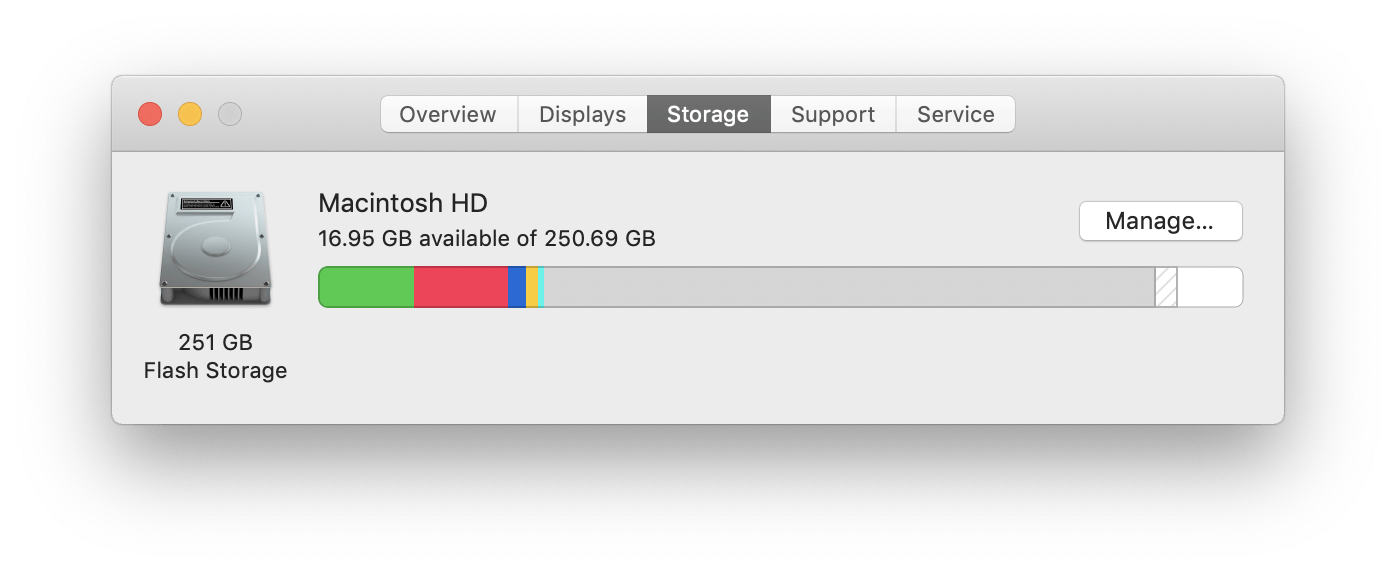
- MAC SYSTEM STORAGE TAKING UP SPACE FOR MAC
- MAC SYSTEM STORAGE TAKING UP SPACE MOVIE
- MAC SYSTEM STORAGE TAKING UP SPACE TV
- MAC SYSTEM STORAGE TAKING UP SPACE FREE
You should also go through and uncheck any other Dropbox folders you don’t need access to on your Mac directly (you can of course still log into the Dropbox website and view them if you need to). As you can see in the photo above, I have my photo backup disabled from Dropbox on my Mac. Choose Selective Sync and don’t select your photo backup.

You can access selective sync settings by choosing Preferences and then hitting the Accounts button. We don’t want that if we are trying to save on space. By default, anything you put in Dropbox will be stored locally. On the Mac, you can dictate what folders sync from Dropbox and are stored locally on your Mac. Photo: Ally Kazmucha/The App Factorįor the previous tip to actually work, you’ll also want to make sure that offloading to a service such as Dropbox isn’t just moving them somewhere else on your hard drive. Limit what Dropbox is storing on your hard drive Using the Selective Sync feature of Dropbox prevents it from storing files you don’t need on your Mac’s drive. When I want to access them, I can simply log in to Dropbox from anywhere, or use the app on my iPhone or iPad. For that reason, I’ve put them in a folder in Dropbox. They aren’t necessarily photos or videos I need available to me across devices.

For example, I have lots of old photos and videos from college and high school.
MAC SYSTEM STORAGE TAKING UP SPACE FREE
This alone can free up tons of hard drive space. If you have old photos and videos that you don’t look at, or need in your immediately accessible library, offload them to either an external drive, or even a storage service such as Dropbox. It’s actually something I’d recommend doing, just in case, before deleting hard copies.
MAC SYSTEM STORAGE TAKING UP SPACE MOVIE
If you’re worried about iTunes ever pulling a movie from iTunes in the Cloud, you can always download and transfer all your files to an external or networked drive for safe-keeping too. It will still stay available for streaming via iTunes in the Cloud. To delete movies off your actual Mac hard drive, just right click the movie and remove it. The only time I actually transfer movies to my Mac (or iPhone or iPad) is if I’m traveling and want to watch a few while offline. That means they aren’t physically downloaded on my Mac’s hard drive, but I have the ability to stream them over my internet connection. Instead, you can stream them using iTunes in the Cloud.Īs you can see in the screenshot above, I have a cloud icon next to all of my movies.

MAC SYSTEM STORAGE TAKING UP SPACE TV
If you purchase movies and TV shows from iTunes, you may have them stored on your Mac’s hard drive. Utilize iTunes in the Cloud for movies and TV Instead of physically downloading movies to your Mac, stream them via iTunes in the Cloud.
MAC SYSTEM STORAGE TAKING UP SPACE FOR MAC

If you suspect you have duplicate photos floating around in your library, there are tons of apps available to help you clean them up. And whenever you add another piece to your workflow, it seems the duplicates always love to come back in droves. Photo duplicates are something it seems we’ve all been combatting since digital photos came into existence. Scan your photo library for duplicates PhotoSweeper can help you clear out duplicates and like photos, resulting in tons of saved storage space. That being said, AppCleaner does an excellent job of helping you clean up unused apps that are hogging unnecessary storage.Ħ.


 0 kommentar(er)
0 kommentar(er)
